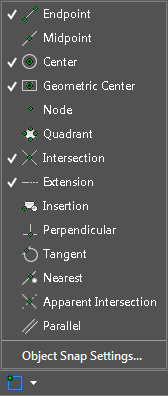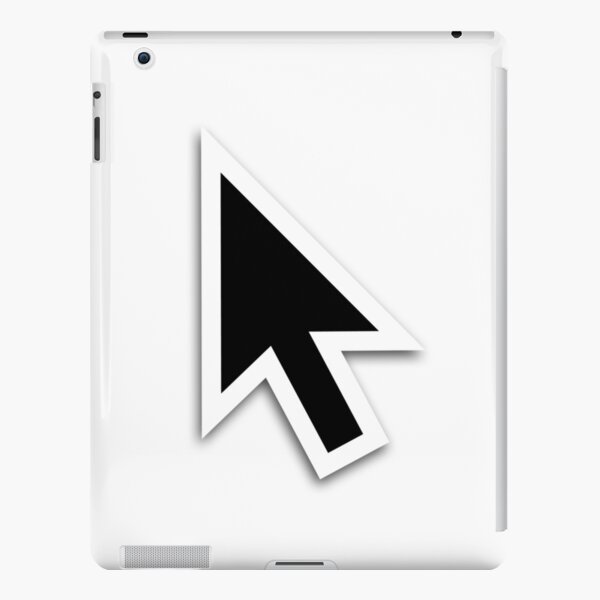Keyboard Focus Mode
ATrim Clip Start to Current Cursor Position
Mac users now have a window snapping feature built directly into Mac OS, which allows users to easily snap windows to aspects of the screen or against one another. This offers a nice way to quickly and precisely align windows, and it’s more or less the Mac equivalent feature of window snapping from the Microsoft Windows world. Restricts cursor movement to specified intervals. Access Methods Menu: Tools Drafting Settings Toolbar: Status bar Snap Command entry: snap or ‘snap for transparent use List of Prompts The following prompts are displayed.
- I recently upgraded from Office 2007 to Office 2016 on my Windows 7 desktop computer. Prior to the upgrade, cursor snap to worked OK on most applications. After the upgrade, cursor snap to does not work with Office 2016 but continues to function.
- Click Start and type: mouse. Then click on Mouse under Control Panel. The Mouse Properties window opens. Select the Pointers Options tab then in the Snap To section check Automatically Move Pointer.
DAdd Fade In from Clip Start to Current Cursor Position
GAdd Fade Out from Current Cursor Position to Clip End
ZUndo
CCopy
BAdd Edit to Clip at Current Cursor Position
;Move Cursor Down a Track while Keeping Selection
'Move Cursor to Next Transient
,Nudge Cursor/Selection Left
MNudge Cursor/Selection Left by Next Value
Playback
␣Start/stop playback
⌥ [Play Edit selection
⌘ Transport Master toggle
Recording
⌘ .Stop record and discard take
⌥ LLoop Record toggle
⌘ ⇧ PQuickPunch toggle
Transport Mode (Numeric Keypad)
0Play/Stop
2Fast Forward
4Loop Playback Mode On/Off
6Quick Punch Mode On/Off
8Countoff On/Off
Shuttle Mode (Numeric Keypad - Pro Tools HD Only)
61 x Forward playback speed
94 x Forward playback speed
31/4 x Forward playback speed
5+61/2 x Forward playback speed
8+92 x Forward playback speed
2+31/16 x Forward playback speed
0Loop Playback of Edit Selection
Auditioning Pro Tools/MMC
⌥ ← →Play by pre-roll value up to selection start/end
⌘ ← →Play by post-roll value from selection start/end
⌘ ⌥ ← →Play by pre and post-roll value through selection start/end
⌥ ← →Cue Transport with pre/post-roll to selection start/end
Edit Modes and Edit Tools
F1 F4Enable Snap to Grid and Shuffle mode
F3 F4Enable Snap to Grid and Spot mode
Edit Selection, Definition, and Navigation
⌘ ⌥ ⇥Enable or disable Tab to Transients command
⌥ ⇥Locate cursor to previous transient

⌃ ⇥Locate cursor to previous Clip boundary/sync point
⌃ ⌥ ⇥Go to and select previous Clip
⇧ ⌃ ↩Extend selection to Song Start
⌥ ⇧ ⇥Extend selection to previous Clip-boundary
⌃ ⇧ ⌥ ⇥Extend selection to include previous Clip
⌥ ↩Go to end of session
⌥ ⇧ ↩Extend selection to end of session
↑ ↓Set selection start/end during playback
↑ ↓Set selection start/end to incoming time code while stopped
⌘ ⌃ ⌥ 'Move selection forward by the selection amount
⌘ ⌃ ⌥ LMove selection backward by the selection amount
⌘ ⌃ ⌥ ⇧ LHalve length of selection
⌥ ⇧ ECancel Zoom toggle and remain at same zoom level
⇧ RRecord enable tracks that contain Edit cursor or Edit selection
⇧ ITrack Input Monitor enable tracks that contain Edit cursor or Edit selection
⇧ SSolo tracks that contain Edit cursor or Edit selection
⇧ MMute tracks that contain Edit cursor or Edit selection
↑Move insertion to end of Edit selection
⌃ ↑ ↓Increase or decrease height of any lane that contains Edit cursor or Edit selection
Editing, Nudging, Trimming
⌘ ⌥ + or -Change Nudge value
⇧ + or -Nudge start/end data to right/left by Nudge value (keeps underlying audio and moves start/end)
⌃ + or -Nudge data within current Clip to right/left by Nudge value (keeps Clip start/end and moves underlying audio)
⌥ ⇧ + or -Nudge left selection boundary right/left by Nudge value
⌘ ⇧ + or -Nudge right selection boundary right/left by Nudge value
⌥ + or -Trim left edge of Clip to right/left by Nudge value
⌘ + or -Trim right edge of Clip to right/left by Nudge value
Clip Gain
Change Mac Cursor
⌃ ⇧ =Show or hide Clip Gain Info
⌃ ⇧ EAdd Clip Gain breakpoint at current Edit location
⌃ ⇧ ↓Nudge selected clip gain down
⌃ ⇧ XCut Clip Gain
⌘ VPaste Clip Gain
Track Compositing
⌥ ⌃ VCopy selection to main Playlist
⌃ Create a new playlist for first selected track in session
⌃ ⌥ Create a new playlist for each track in session
⌥ ⌃ ⇧ Create a new playlist for each selected track in session
⌘ ⌃ Duplicate main playlist for first selected track in session

⌘ ⌥ ⌃ Duplicate main playlist for each track in session
⌘ ⌥ ⌃ ⇧ Duplicate main playlist for each selected track in session
Zoom
⌘ ⌃ [Zoom to show entire session horizontally without affecting vertical zoom or scrolling
⌘ ⌃ ]Zoom in horizontally on a selection without affecting vertical zoom or scrolling
⌘ ⌥ ⌃ [Vertical zoom to show default waveform height (Audio)
⌘ ⌥ [ or ]Incrementally zoom vertically on all audio tracks
⌘ ⌃ ⇧ [Vertical zoom to show all notes (lowest to highest) in MIDI and Instrument (MIDI)
⌥ ⌃ AHorizontal zoom to show all tracks
⌥ FHorizontal zoom and scroll timeline excluding MIDI events
⌥ ⌃ FHorizontal zoom to selection, including MIDI events
⌘ ⌥ [ or ]Incrementally zoom vertically on all audio tracks
⌥ ⇧ ECancel Zoom Toggle and remain at same zoom level
File Menu
⌘ OOpen Session
⌘ ⇧ WClose Session
⌘ ⌥ BBounce To Disk
⌘ ⇧ IImport Audio
⌘ PPrint Score from Pro Tools Session
Edit Menu
⌘ ⇧ ZRedo
⌘ CCopy
⌘ BClear
⌃ ⇧ XCut Special Cut Clip Gain
⌥ MPaste Special Merge
⌘ ⌃ VPaste Special to Current Automation Type
⌥ [Play Edit Selection
⌘ DDuplicate selection
⌥ HShift selection
⌘ TTrim Clip to Selection
⌥ ⇧ 8Trim Clip End to Insertion
⌘ HHeal Separation
⌥ ⇧ 3Consolidate selection
⌘ ⌥ ZRestore Last Selection
Memory Locations and Markers
⌃ NToggle Timeline Insertion/Play Start Marker Follows Playback preference on/off
Automation
⌃ ⌘ ← →Change to previous/next Track View on all tracks included in current selection
⌃ ⌥ ⌘ ← →Change to previous/next Track View on all tracks
⌘ ⌥ TThin Automation
⌘ ⌥ /Write Automation to All Enabled Parameters
⌘ ⌥ ⇧ /Trim Automation to All Enabled Parameters
⌥ ⇧ /Glide Automation to All Enabled Parameters
⌘ ⌃ VSpecial Paste of automation data between different controls
⌘ XCut
⌘ DDuplicate
⌘ ⇧ EInsert Silence
Fades, Fades Dialog
⌘ ⌃ FApply crossfade without opening Fades dialog
⌥ GFade to End
⌃ ↑ ↓Cycle up/down through Out Shape parameter options
⌥ ↑ ↓Cycle up/down through In Shape parameter options
⌃ ← →Cycle up/down through preset Out Shape curves
View Menu
⌘ ⌥ MView Narrow Mix window option

Track Menu
⌘ GGroup Tracks
⌥ KAuto Input Monitoring/Input Only Monitoring (Pro Tools only)
⌥ KSet Record Tracks to Input Only/Set Record Tracks to Auto Input (Pro Tools HD)
⌥ CClear all Clip indicators
Clip Menu
How To Change Mac Cursor
⌘ LLock/Unlock Clips
⌥ ⇧ FBring to Front
⌘ ⌥ GGroup Clips
⌘ ⌥ RRegroup Clips
⌘ RCapture Clip
⌘ 0Quantize Clip to Nearest Grid
Clip List
⌘ ⇧ DClear Find
⌘ ⇧ 2Show/Hide MIDI Clips
⌘ ⌥ KShow/Hide Auto-Created Clip
⌘ ⇧ USelect Unused Clips
⌘ ⇧ RRename selected Clips
⌘ ⇧ YExport Clip Definition
Step Input
1Whole note
41/4 note
61/16 note
81/64 note
3Toggle Tuplet on/off
0Undo step
Minus (–)Nudge back
/Edit Selection indicators
I recently bought a Mac Mini with OS X Snow Leopard, and one of the annoyances I found is there isn’t a way to get the pointer to “Snap To” open dialog boxes like in Windows. Today we take a look at a shareware utility that will add that functionality to OS X.
Snap To in Windows
1. In Windows you can go into Control Panel and click on Mouse. Then in Mouse Properties under the Pointer Options tab, check Automatically move pointer to the default button in a dialog box.
2. The convenience of this is when you’re performing a function and a dialog appears, you don’t need to drag the pointer across the screen to click on it – the mouse automatically jumps to the box. This is a great time saving feature so you can be more productive…especially if you have multiple monitors.
LazyMouse for OS X
1. Unfortunately the option isn’t available in OS X by default. But with the help of the shareware utility Lazy Mouse, that functionality can easily be added. Download Lazy Mouse and double-click the LazyMouse icon to install it.
2. Go through the installer like normal and make the selections you want. Like here you’ll need to choose to install for all users or not.

3. When installation is complete, make sure to check Whenever a new window appears, snap the cursor to it.
Snap To Cursor For Mac Shortcut
4. You’ll get a message letting you know that Access for Assistive Devices needs to be turned on for LazyMouse to work. Click the button to open the Universal Access Preferences Pane.
Mac Cursor Pack
5. Universal Access opens and at the bottom check Enable access for assistive devices…then close out of the screen.
6. Now open System Preferences…
7. In System Preferences you’ll see LazyMouse listed under the Other section.
8. Click on the icon to open the LazyMouse options where you can customize it to act how you want. LazyMouse is shareware, so there will be a Please Register LazyMouse nag message while you’re using it.
9.If you want to get rid of the nag message, you can purchase a license for $9.95. But if you can deal with it, you can continue to use it. If you like LazyMouse though, you might want to slap down 10 bucks for it.
Snap To Cursor For Mac Windows 10
The “Snap To” feature may seem like a minor setting, but it’s one of the first things I set up when rebuilding a Windows machine…it saves a lot of time.
Small Mac Cursor
If you’re moving from a Windows world to a Mac environment…this handy utility will bring a familiar Windows feature to OS X.



